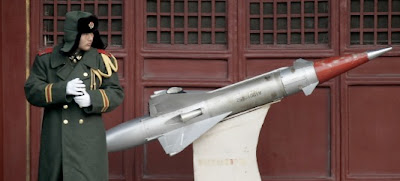It's springtime for anti-satellite missiles — again — now that China has fired a missile into space and destroyed an aging weather satellite orbiting 500 miles above the earth. The James Bond-style exercise left a several-hundred- meter-wide cloud of scrap metal floating around in space. Some of the debris could pose a threat to spacecraft passing through the region, scientists say, and will remain a problem for hundreds of years to come. And there will be repercussions on Earth, too.
Protests and expressions of concern were lodged over the test by the U.S., Japan, Canada, South Korea and Australia, but Beijing has so far refused to comment on the issue or even confirm the test took place. "The brazenness of this is a bit frightening," says Mike Green, former senior Bush Administration Asia adviser. "It shows that the Peoples Liberation Army has considerable leeway — a great deal of influence if not autonomy — to increase their capacity even at considerable diplomatic cost."
The reason for all the fuss is simple: the test potentially marks a major step forward in China's ability to nullify the huge technological advantage of the U.S. in any clash over Taiwan. While Western intelligence agencies have long been aware that the People's Liberation Army was attempting to develop an anti-satellite system, the successful targeting of a single satellite in high orbit marks a significant milestone. When the Pentagon issued its annual report to Congress on China's Military Power last summer it stated that "China can currently destroy or disable satellites only by launching a ballistic missile or space-launch vehicle armed with a nuclear weapon." All that has now changed.
Tags:



